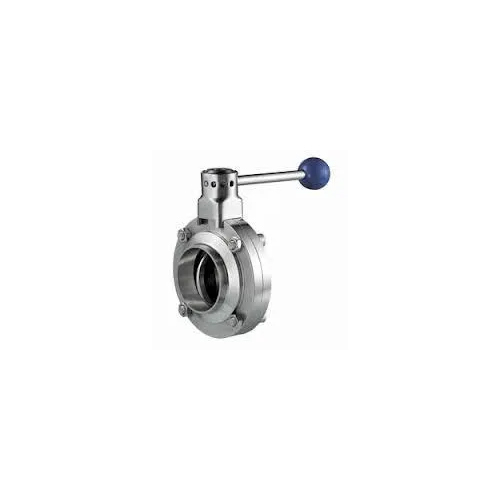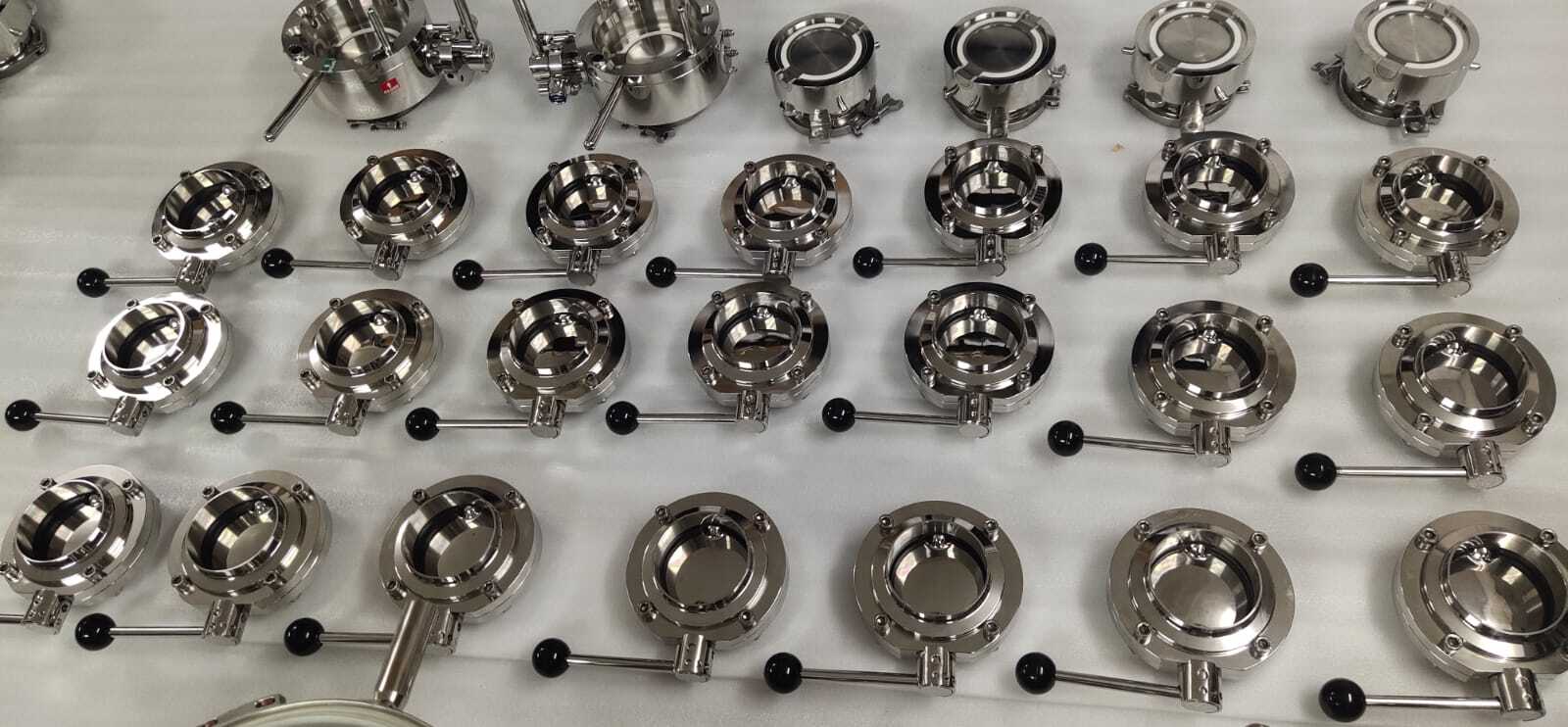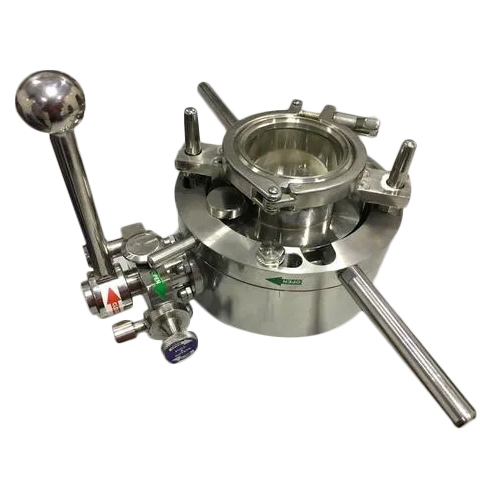- Home Page
- Company Profile
-
Our Products
- Rapid Transfer Port
- Industrial Butterfly Valves
- Barrel Pumps
- Hygienic Pumps
- Centrifugal Pumps
- Corrosion Resistant Pumps
- Motorised Barrel Pumps
- Industrial Valves
- Mechanical Seals
- Storage Tanks
- Manual Butterfly Valves
- Rapid Transfer Ports
- Steel Storage Tank
- Marine Diesel Engine Spare Parts
- Sanitary Pumps
- Water Pumps
- Metering and Dosing Pumps
- Diaphragm Pump
- Manual Valve
- Gear Pump
- Contact Us
Trusted company that deals in quality-made products


Manual Butterfly Valve (M B V)
Product Details:
- Size 40~300 MM
- Material Stainless Steel
- Power Source Manual
- Height 101.6 - 304.8 Millimeter (mm)
- Product Type Butterfly Valves
- Media Water
- Working Temperature High
- Click to view more
X
Manual Butterfly Valve (M B V) Price And Quantity
- 15 Unit
Manual Butterfly Valve (M B V) Product Specifications
- 40~300 MM
- Silver
- Butterfly Valves
- Water
- High
- Stainless Steel
- Manual
- 101.6 - 304.8 Millimeter (mm)
Manual Butterfly Valve (M B V) Trade Information
- 1-2 Unit Per Month
- 15-20 Days
- Asia, Australia, South America, Western Europe, Middle East, Central America, Eastern Europe, North America, Africa
- All India
Product Description
With the help of our employees, we have been able to offer an excellent range of Manual Butterfly Valve (M B V). We are highly enriched with advanced resources which are utilized in order to design the offered products as per the latest market trends. Manufactured with premier-grade components and other raw material, these products are highly suitable for the industrial applications. Owing to their excellent performance, perfect finish and high tensile strength, these products are highly demanded in the market.
Installation Of Butterfly Valve
There are a few installation checklist to follow:
- Be assured that the temperature and pressure will be within the limits of the products intended capacity while it is being installed.
- The construction material of the valve should be compatible with the chemicals of the media/fluid flowing through the pipeline.
- Valve ends and piping should be clean and free of defects. You should check this out.
- Sufficient free space is important for valve installation. To do this, check the distance between the pipe edges.
- In order to lift larger valves, the material of the butterfly valve must be perfect and suitable.
- The pipe size should match the inlet and outlet size measurements and the dimensions of the unit to be installed. Add support if the pipe is straining (which happens due to the weight).
- We recommend 6 diameters from the top of the butterfly valve and approximately 4 diameters from the bottom for a secure installation.
Maintenance of Manual Butterfly Valve (M B V)
Manual Butterfly Valve (M B V) should be well maintained to prevent rust and grease. Follow below points:
- There is a grease nipple on the top of the valve. This is not observable when the valve arrives. Grease the bonnet periodically until excess grease runs out.
- For maintenance, the gearbox can be lubricated with lithium-based grease.
- All parts of the valve can be easily cleaned using silicone based products/lubricants.
- If not used regularly, twist or turn the butter valve once a month.
| Valve Size | 4 inches |
| Operator | HAND OPRETED |
| Model Name/Number | MBV |
| Country of Origin | Made in India |
| Material | SS 304 & SS 316 |
Frequently Asked Questions:
1. How long do Manual Butterfly Valve (M B V) last?
Ans: Generally, the service life of a typical rubber seal valve seat is about 15-20 years, and the service life of a metal seal valve seat is about 80-90 years.
2. Do Manual Butterfly Valve (M B V) need lubrication?
Ans: If your systems Manual Butterfly Valve (M B V) operate in a dry environment, lubrication may be required for proper functioning of internal parts. Ensuring that the discs and seats are lubricated significantly increases their service life.
3. Does flow direction matter in Manual Butterfly Valve (M B V)?
Ans: Manual Butterfly Valve (M B V) can be bi-directional, but there is a preferred direction of flow marked on the body of the valve. However, it is highly recommended to install the valve in the preferred flow direction as this will prolong valve life and reduce the torque required to actuate the valve.
4. How much pressure can a Manual Butterfly Valve (M B V) hold?
Ans: Its heat tolerance is 1200 degree fahrenheit as it can withstand 1,480 PSI of pressure
5. How do you fix a leaky Manual Butterfly Valve (M B V)?
Ans: If there is a leak between both the actuator and the Manual Butterfly Valve (M B V), clean the packing hole and replace the packing if necessary. If the valve is difficult to actuate or actuate, lubricate the actuator, wipe the seat and stem and replace. Also, use thread skip or loctite when tightening the screws.
6. How do I know if my Manual Butterfly Valve (M B V) is closed?
Ans: Manual Butterfly Valve (M B V) have a lever handle to indicate if there is flow. Open the valve by turning the handle half a turn. To close the valve, turn the handle perpendicular to the stem. The lever should be parallel to the spindle when the Manual Butterfly Valve (M B V) is closed.
7. What is the main disadvantage of Manual Butterfly Valve (M B V)?
Ans: Isolation valves are not optimally designed to handle mixed dry materials. Abrasive, dry bulk materials can damage them and can erode the valve to the point that it no longer provides an effective seal and must be replaced.
8. What makes a Manual Butterfly Valve (M B V) high performance?
Ans: High performance Manual Butterfly Valve (M B V) are called double offset because they use discs that are offset from the center of the seat. In this configuration the disc is eccentric or offset from the valve seat. When the disc starts spinning, its off the seat instead of on top of it.
9. Do Manual Butterfly Valve (M B V) leak?
Ans: Manual Butterfly Valve (M B V) have a permissible leakage tolerance, which may vary depending on the application. While zero leakage sounds desirable, from an engineering standpoint this is not always the case and many Manual Butterfly Valve (M B V) will eventually leak. This is especially true when the medium is a gas such as helium.
Stainless Steel Strength for High-Temperature Performance
Our Manual Butterfly Valve is engineered from premium stainless steel, ensuring exceptional resistance to corrosion, heat, and wear. Its robust construction allows it to perform reliably in high-temperature water applications, making it a suitable choice for industries that demand both durability and efficiency.
Versatile Sizing and Installation Flexibility
Available in sizes ranging from 40 to 300 mm and heights between 101.6 mm and 304.8 mm, this valve adapts to a wide variety of system requirements. Its design facilitates straightforward manual operation, delivering seamless flow control for diverse water systems.
FAQs of Manual Butterfly Valve (M B V):
Q: How is the Manual Butterfly Valve typically used in water systems?
A: The Manual Butterfly Valve is primarily installed in water distribution networks to regulate and isolate fluid flow. Its stainless steel body endures high temperatures, making it ideal for industrial and commercial use, where manual, on-demand flow control is necessary.Q: What materials are used in the construction of this butterfly valve?
A: This valve is constructed from high-grade stainless steel, which offers exceptional resistance to corrosion, high temperatures, and mechanical stress, ensuring long-lasting performance in rigorous environments.Q: When should I choose a manual butterfly valve over an automated valve?
A: A manual butterfly valve is an excellent choice when power sources are limited or when simple, direct control is preferred. It is especially suitable for facilities prioritizing operational simplicity and ease of maintenance over automated systems.Q: Where are these butterfly valves manufactured and exported from?
A: These valves are manufactured in India and are supplied and exported to global markets, making them accessible for a wide range of industrial and commercial applications worldwide.Q: What is the process for installing a Manual Butterfly Valve of this type?
A: Installation involves aligning the valve between the corresponding pipe flanges, securing it according to industry standards, and ensuring the manual actuator is easily accessible for operation. Professional installation is recommended for optimal performance and safety.Q: What are the main benefits of using this stainless steel butterfly valve?
A: Key benefits include outstanding durability in harsh environments, reliable flow control at high temperatures, corrosion resistance, and low maintenance needs, contributing to cost-effective and efficient water system management.Tell us about your requirement

Price:
Quantity
Select Unit
- 50
- 100
- 200
- 250
- 500
- 1000+
Additional detail
Mobile number
Email




 Call Me Free
Call Me Free
 English
English Spanish
Spanish French
French German
German Italian
Italian Chinese (Simplified)
Chinese (Simplified) Japanese
Japanese Korean
Korean Arabic
Arabic Portuguese
Portuguese